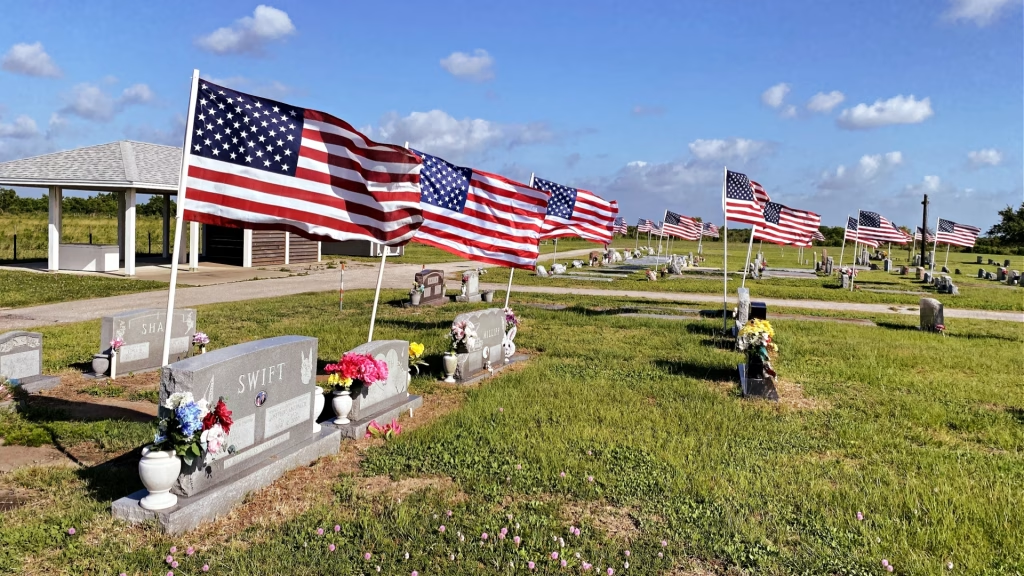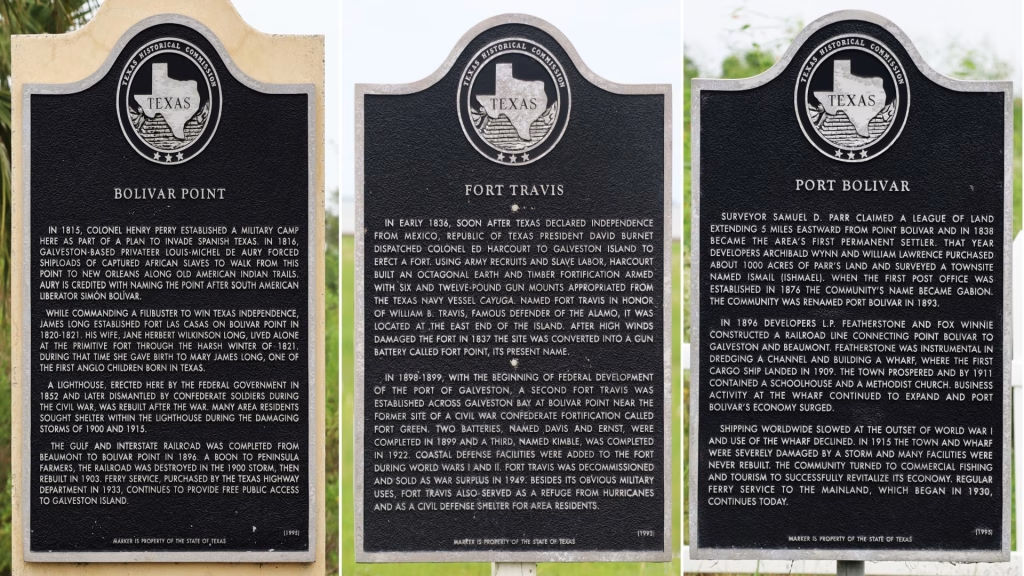Bolivar History
Before European colonization, the Bolivar Peninsula was inhabited by the Karankawa Indians, a nomadic people known for their imposing stature and warrior-like presence. The Karankawas played a prominent role in the early history of the Gulf Coast, navigating the complex web of European powers, settlers, and competing indigenous tribes. Their reputation as fierce warriors, sometimes enhanced by stories of ritual cannibalism, often overshadowed their sophisticated understanding of the region’s natural resources. The Karankawas used the peninsula for fishing and seasonal migration, long before European settlers arrived.
The first European influence in the region came with Spanish expeditions in the early 16th century. However, it was the French pirate Jean Lafitte who, in the early 1800s, brought European settlers and opportunists to the area. Lafitte established a base on Galveston Island, directly across from the peninsula, which soon attracted settlers and traders seeking fortune in the Gulf region.

Frances Xavier Mina, a Spanish revolutionary, arrived on the peninsula in 1816 during his failed attempt to liberate Mexico from Spanish rule. To defend himself and his men from local tribes like the Karankawas, he constructed an earthen levee that became one of the first formal fortifications on the peninsula.
The strategic value of Bolivar Peninsula soon became apparent. Its location at the entrance to Galveston Bay made it ideal for fortifications and trading posts. By the early 19th century, Port Bolivar, a community that would later become a central hub for the area, began to take shape.
One of the most storied figures in the history of Bolivar Peninsula is Dr. James Long, an early American filibuster who sought to free Texas from Spanish rule in the 1810s. Long established his headquarters at Port Bolivar in 1820, bringing with him 300 men, his wife Jane Long (later known as “The Mother of Texas”), and their children. Long’s dream of liberating Texas was cut short when he was captured and killed in 1822. However, his wife’s courage during this period became legendary.
While Long was away, Jane defended the fort in the harsh winter of 1821, famously firing the cannon every morning to signal that the fort was still defended. During this time, she gave birth to her daughter Mary, reportedly the first child of English descent born in Texas. Jane Long’s legacy is deeply intertwined with the early history of Texas, particularly in its struggle for independence.
During the Civil War, the strategic value of Bolivar Peninsula was again realized. Fort Green was constructed at Bolivar Point to defend Galveston Bay and protect the southern coast from Union forces. The fort’s defenses included large guns and fortifications, though the area saw limited action compared to nearby Galveston Island, where several naval skirmishes occurred. Following the war, the fortifications were largely abandoned.
Post-Civil War, the Bolivar Peninsula grew as a center of commerce, largely thanks to its location along the coast. Fishing and shipping became major industries, with Port Bolivar serving as a key hub for exporting agricultural products, seafood, and timber. The development of the Gulf & Interstate Railroad in the late 19th century further transformed the area. The railroad connected Bolivar Peninsula to the rest of Texas, making it easier for settlers, tourists, and goods to move to and from the region. Fort Travis, constructed in 1898 at Bolivar Point, added to the peninsula’s significance.

The railroad played a vital role in boosting the tourism industry, especially in the early 20th century. Seaside resorts and vacation homes began to dot the peninsula, and Galveston Island’s popularity as a destination drew people across Bolivar Roads. During this time, Bolivar Peninsula became known as a tranquil escape for those looking to enjoy the Gulf Coast’s natural beauty.
Throughout its history, Bolivar Peninsula has endured numerous hurricanes, many of which left long-lasting scars. One of the most devastating events was the Galveston Hurricane of 1900, which caused widespread destruction across the peninsula and the nearby island. Entire communities were obliterated, and Fort Travis was heavily damaged. The hurricane remains the deadliest natural disaster in U.S. history, claiming an estimated 6,000-12,000 lives.
While the 1900 storm was catastrophic, Hurricane Carla in 1961 brought its own wave of destruction. Winds of over 170 mph and massive storm surges left the peninsula in ruins, with many residents taking shelter in the historic bunkers of Fort Travis. Stories of people and their livestock riding out the storm in these concrete structures became part of local lore.
Perhaps the most notorious hurricane in recent history, Hurricane Ike struck in 2008. Ike was a Category 4 storm when it made landfall near Galveston and Bolivar Peninsula. The devastation was widespread, with entire neighborhoods washed away by the storm surge. The town of Gilchrist was almost completely destroyed. Bolivar Peninsula, in many areas, was reduced to bare foundations, with little more than debris left behind. In the aftermath, recovery efforts were slow, but resilient residents began rebuilding.
Over the centuries, several notable figures have left their mark on the peninsula. Jane Long, as mentioned earlier, stands out as one of Texas’ most important early pioneers. Jean Lafitte, while more associated with piracy, is also linked to the region’s early settlement history.
Communities such as Crystal Beach, Gilchrist, and High Island have become landmarks in the area. Crystal Beach, in particular, is a popular tourist destination known for its tranquil beaches, relaxed atmosphere, and summer homes. High Island is famous for its migratory bird sanctuaries, drawing birdwatchers from across the nation. Meanwhile, the town of Port Bolivar retains its historical roots, continuing to serve as the gateway to the peninsula via the Bolivar Ferry.

Several historical markers and sites highlight the significance of Bolivar Peninsula’s past. Fort Travis Seashore Park, for example, commemorates the military installations that once stood watch over Galveston Bay. The Jane Long Memorial honors the contributions of “The Mother of Texas.” Visitors to the area can still see remnants of the old concrete bunkers, cannons, and fortifications that protected the region during both World Wars.
The Bolivar Point Lighthouse, a towering structure built in 1872, remains a lasting symbol of the area’s resilience. While no longer operational, it once guided ships safely through Galveston Bay and withstood countless storms, including the infamous 1900 hurricane. Today, it is a privately owned historical landmark and a testament to the region’s ability to endure the elements.
In modern times, Bolivar Peninsula has become a beloved getaway for residents of Texas and beyond. Its unique blend of history, coastal charm, and natural beauty attracts visitors year-round. However, the area continues to face the threat of hurricanes and rising sea levels. Efforts to improve infrastructure, protect coastlines, and promote sustainable tourism have become priorities for both local and state officials.
Despite these challenges, Bolivar Peninsula remains a vital part of Texas’ coastal identity. Its rich history, shaped by indigenous peoples, settlers, pirates, and soldiers, continues to captivate visitors, while its natural beauty ensures that Bolivar will remain a destination for generations to come.
More information can be found at the links below.




